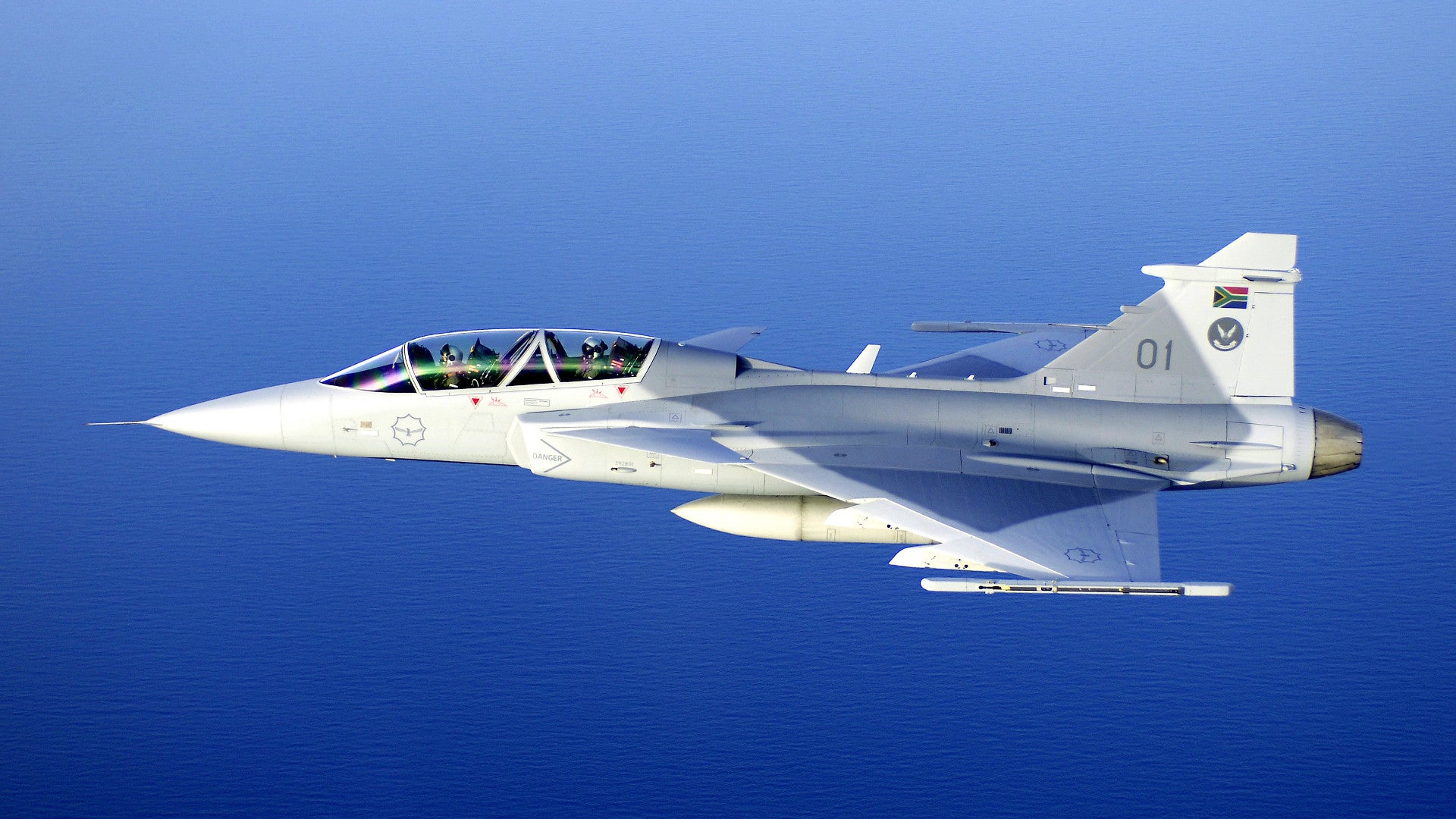Rhino poachers operating in South Africa, especially along the country’s border with Zimbabwe, will soon face a new opponent, the Gripen fighter jet, according to a report from FlightGlobal. The revelation followed another announcement that the South African Air Force (SAAF) had finally gotten nearly all of its Swedish-made aircraft out of storage and back onto the flightline.
On June 18, 2017, Lieutenant Colonel Josias Mashaba, head of the SAAF’s 2 Squadron gave details about the state of his country’s Gripen fleet during an annual meeting of the Swedish Air Force Fan Club – yes, fan club – in Paris, France. The event was tertiary to the Paris Air Show at Le Bourget, but did bring together officials from the Swedish Air Force, Gripen manufacturer Saab, representatives from world-wide operators of the fighter jet such as Mashaba, and members of the press, all eager to chat about the aircraft.
“They are smart, those guys, they are not stupid, but we find them,” Mashaba said of the poachers. 2 Squadron flies nearly all of the SAAF’s remaining fleet of approximately 19 single-seat Gripen C and two-seater Gripen D aircraft at Waterkloof Air Base in country’s administrative capital Pretoria.
The fighter jet’s main tool in its new surveillance role will be the Litening III targeting pod. Israeli defense company Rafael designed the system, which it continues to produce for the country’s air arm, as well as export customers like South Africa. American defense contractor Northrop Grumman makes additional variants in partnership with the firm for the U.S. military and foreign buyers.
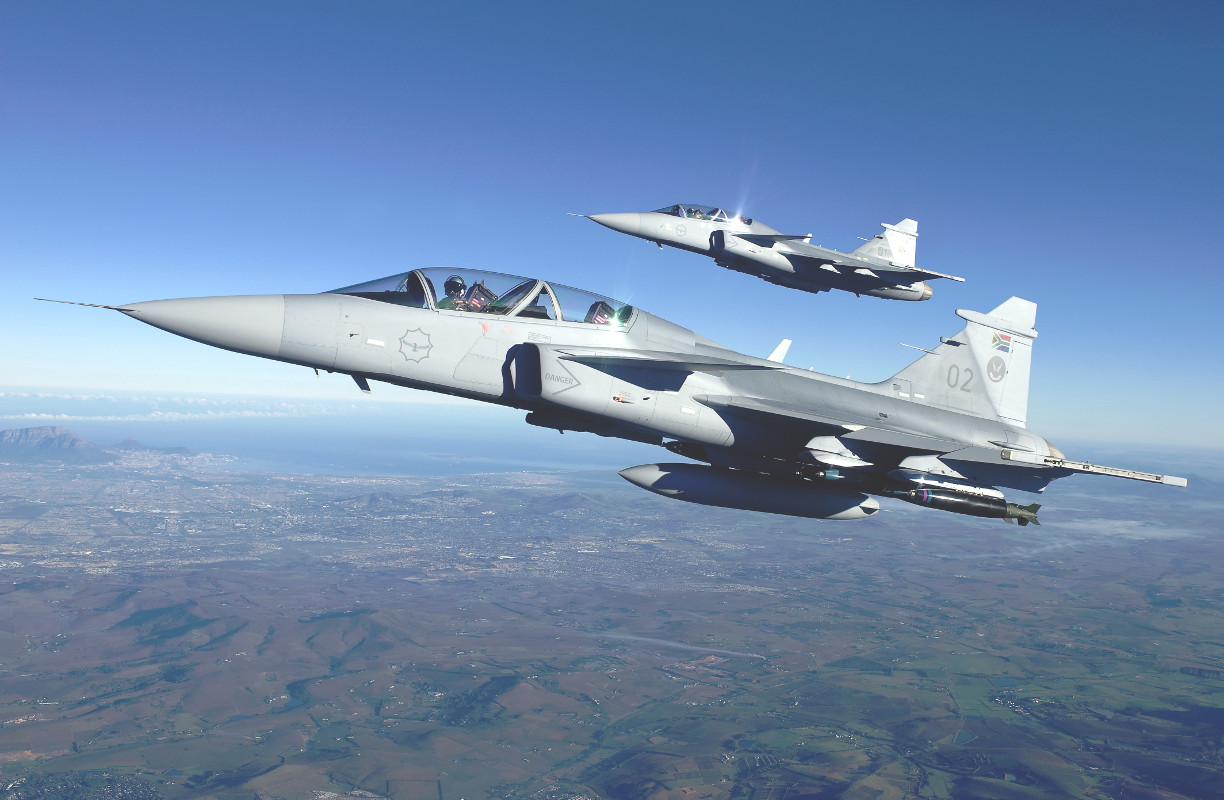
Intended for spotting and then pointing precision guided munitions at enemy targets on the ground, the unit has a sensor turret with day- and night-vision cameras, as well as a combination laser range finder and target designator. The Litening III variant has additional surveillance capabilities in that a pilot can capture still images for further analysis. South Africa’s Gripens have a domestically produced data link, called Link ZA, which could potentially share this information with command centers on the ground or even groups of wildlife rangers, as long as they have the appropriate equipment. Regardless, it’s not unusual for air forces to use targeting equipment for surveillance and reconnaissance purposes, with the U.S. military referring to such missions formally as “Non-Traditional Intelligence, Surveillance, and Reconnaissance,” or NTISR.
Mashaba conceded that the mission might not be the best use of the fighter jet’s capabilities, but pointed out that the anti-poaching sorties would just be one part of his squadron’s duties. It’s also not the first time a country has sent high performance aircraft to help with domestic law enforcement functions. As late as 1994, the California and Nevada Air National Guards were flying RF-4C reconnaissance aircraft, based on the F-4C Phantom II fighter jet, looking for illicit drug crops within the United States. Eventually, the Air National Guard as a whole transitioned primarily to the less expensive RC-26 twin-engine turboprop for counter-narcotics missions. In and outside of the United States, however, military surveillance aircraft, radar planes, fighter jets, drones, and even bombers have supported interdiction missions for America’s so-called “War On Drugs.” With little threat to the aircraft from the drug smugglers in most cases, these operations essentially offer low-risk training opportunities against real world targets. Other countries have executed similar operations, and have used their fighters for tertiary domestic surveillance roles. In South Africa, looking for rhino poachers would be a good way to keep pilot flying proficiency up and maintaining critical skill sets while providing a valuable service.
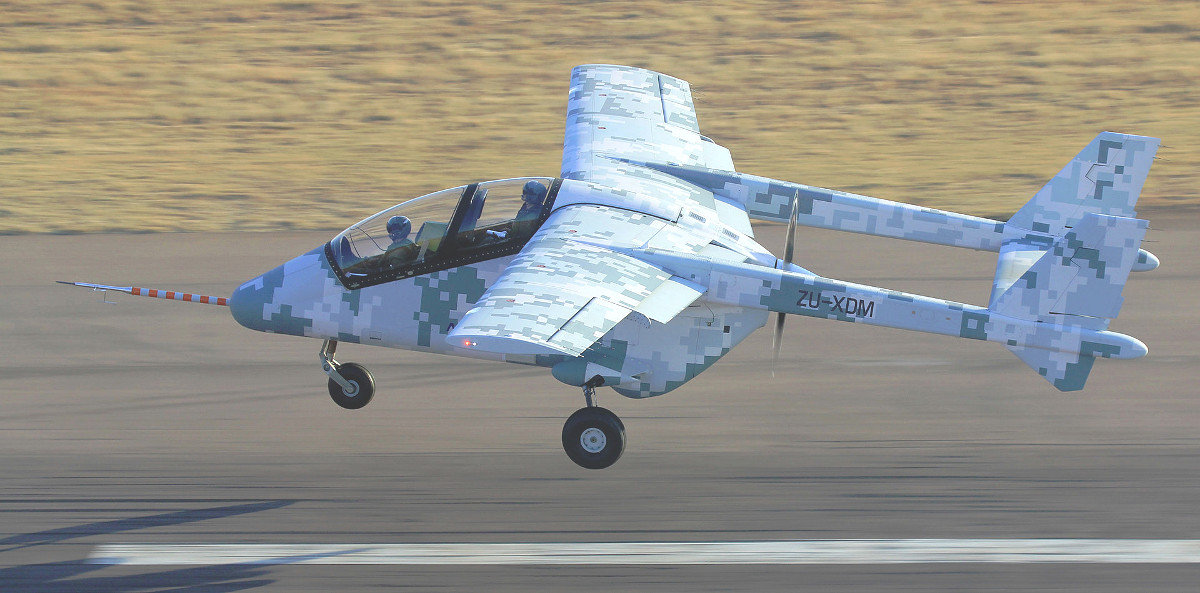
South Africa could ultimately transition to an aircraft better suited to this unique role, such as the long-in-development AHRLAC, standing for Advanced High Performance Reconnaissance Light Aircraft. American plane maker Boeing and South African designer Paramount Group have now teamed up to continue flight testing on a militarized version they’re calling the Mwari. The push-prop aircraft will be able to carry light weapons and sensors while also providing the crew with good visual visibility of the ground during low-level flight.
“And if we do nothing, the rhinos will all be gone,” Mashaba said. Poachers and other illegal hunters killed more than 1,000 of the endangered animals in both 2015 and 2016, primarily for their horns, which end up as black market luxury items, ingredients for holistic medicines, or just plain old trophies. South Africa is reportedly home to approximately 75 percent of Africa’s total rhino population, including 2,000 of the critically endangered black rhinos.

In addition, any new missions might add additional impetus to an ongoing push to revitalize the SAAF in general. In 2013, the service had to send at least a dozen jets into what amounted to long-term storage because it simply could not afford to fly them. This was the case even though the cost to fly the jets was relatively modest, between $6,000 and $8,000 per flight hour, according to Mashaba. Though we don’t know what the officer’s figure actually includes, the U.S. Air Force spends tens of thousands of dollars per flight hour to operate the F-16C Viper when one takes into account a variety of secondary and tertiary supporting costs.

“Every country has its ups and downs and has budget cuts,” Mashaba told the gathering in Paris. “We have overcome them and we basically have all our Gripens up and running.”
According to FlightGlobal, South Africa is has a goal of eventually spending two percent of its gross domestic product on defense, but has yet to break the one percent mark. However, the existing budget increases were enough to not only get the Gripens back in action, but also add Link ZA to the country’s BAE Hawk 120 advanced trainers. This means trainees will know how to use the system before transitioning to the Gripen and that pilots can exchange information between the two platforms, if necessary.
“We ‘Gripenised’ the Hawk,” Mashaba explained. “When you are flying the Hawk, you are able to see the Gripens around you.”
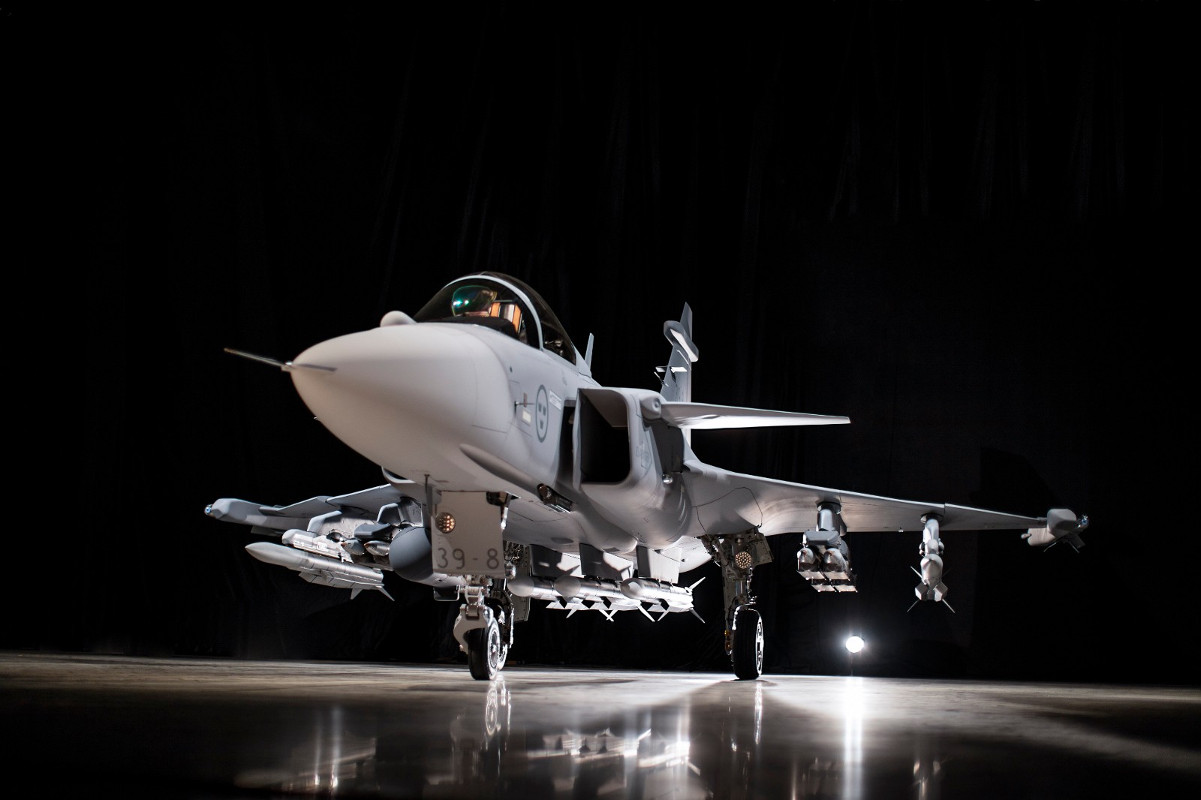
On top of that, Saab is likely to see South Africa’s expanding military budget and active Gripen fleet as a good reason to pitch the country on its new Gripen E variant, at least one day. Derived from the earlier Gripen Next Generation demonstrator, the E model has a new engine and improved avionics and mission systems, among other upgrades, making it significantly more capable than earlier versions. On June 15, 2017, the prototype made its first flight, flying for 40 minutes before returning to the company’s airfield at Linköping.

In particular, its Italian-built ES-05 Raven radar is a fast-scanning active, electronically-scanned array (AESA) unit that can track multiple targets at once. Installed on a moving mount, pilots can also focus the beam independent of the aircraft’s flight path, letting them maneuver without necessarily losing their radar picture. In order to make the jets more attractive to potential buyers, Saab says the plane’s physical and software architecture are inherently flexible, allowing countries to install their own gear, which could include indigenous systems such as the Link ZA.
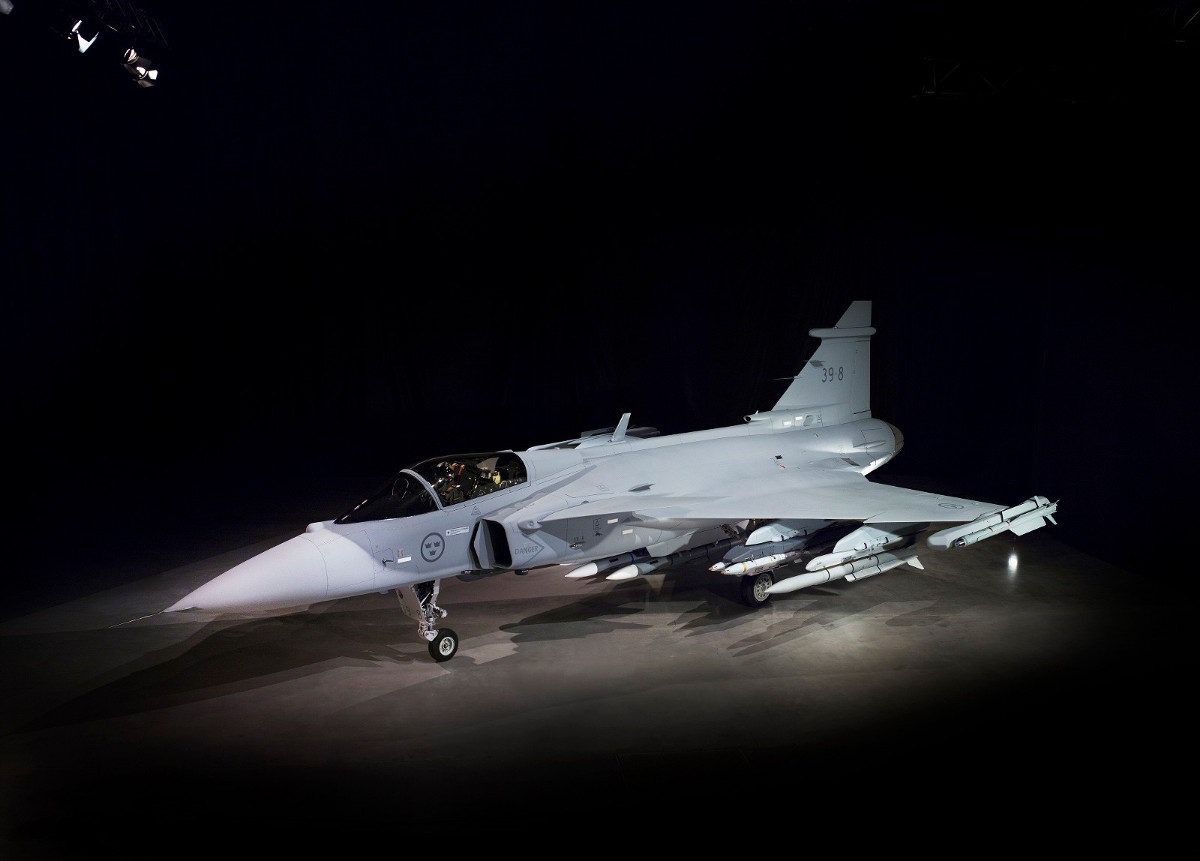
As it stands now, unfortunately, South Africa doesn’t appear to be in the market for a new fighter jet. In addition, Saab continues to support the older C and D models, so there might not be a need for the country to upgrade immediately. The Swedish firm has already secured a deal with Brazil for the new E model, and has submitted formal offers for Gripens of various types as part of ongoing fighter competitions in Finland, India, and Indonesia, among others.
In the meantime, Mashaba’s pilots will fly their existing Gripens to help protect South Africa’s embattled rhino herds.
Contact the author: joe@thedrive.com
